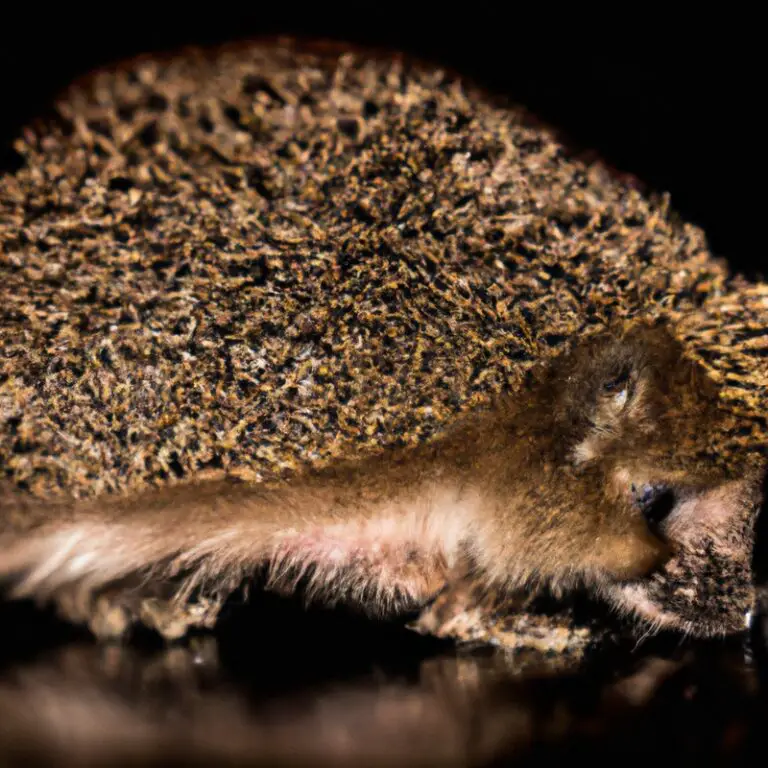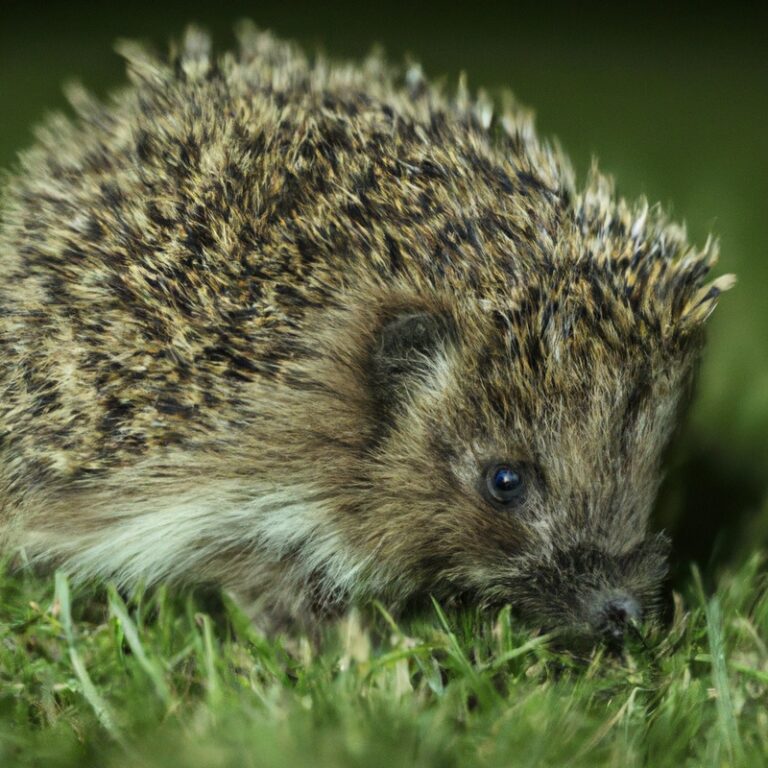How To Create a Hedgehog-Friendly Neighborhood Network?
Key Takeaways:
- Provide natural habitats like bushes, hedges, and log piles to attract hedgehogs.
- Eliminate hazards such as garden netting and chemicals to ensure a safe environment for hedgehogs.
- Create access points in fences and walls to allow hedgehogs to move freely between gardens.
- Educate your neighbors about the importance of hedgehog conservation and encourage their involvement in the network.
Are you enchanted by the whimsical charm of hedgehogs? Do you want to create a safe haven for these spiky creatures in your neighborhood?
Look no further! In this article, we will delve into the fascinating world of hedgehogs, understanding their behavior, needs, and the importance of conservation.
We will explore how you can gather support and raise awareness, as well as creating a hedgehog-friendly habitat and introducing hedgehog-friendly features in your neighborhood. Plus, we will discuss the crucial aspects of maintaining and monitoring the hedgehog-friendly network.
Get ready to make your neighborhood a haven for hedgehogs!
| Steps | Description |
|---|---|
| Gather information | Research about hedgehogs, their habitat, and the requirements for creating a hedgehog-friendly neighborhood network. |
| Spread awareness | Inform your community about the importance of hedgehog conservation and the benefits of creating a hedgehog-friendly neighborhood network. |
| Create green spaces | Plant native plants and create wildlife-friendly habitats in your neighborhood to provide food, water, and shelter for hedgehogs. |
| Remove hazards | Check for potential hazards like litter, garden netting, and chemicals, and remove them to ensure the safety of hedgehogs. |
| Build hedgehog highways | Leave small gaps in garden fences and walls to allow hedgehogs to move freely between different gardens and establish their territory. |
| Provide nesting sites | Leave an area of your garden wild or create purpose-built hedgehog houses for nesting and hibernation. |
| Monitor and evaluate | Regularly monitor and evaluate the success of your hedgehog-friendly neighborhood network, making any necessary adjustments. |
Understanding Hedgehog Behavior and Needs
Hedgehog Behavior and Needs: Learn about their habitats, diet, hibernation, and the importance of conservation.
Hedgehog Habitats
Hedgehogs require safe and suitable habitats to thrive.
Here are some key points to consider for creating hedgehog-friendly habitats:
- Provide shelter: Hedgehogs need places to hide, rest, and hibernate. Offering natural shelters like log piles, dense vegetation, and brush piles can provide them with a safe haven.
- Create food sources: Encourage a diverse range of insects, slugs, and worms by avoiding pesticides and providing wild areas with native plants. Hedgehogs primarily feed on these creatures.
- Ensure connectivity: Hedgehogs travel quite a distance each night in search of food and mates. Creating small hedgehog-friendly holes in fences, or removing any barriers that may prevent their movement, can help them navigate between neighboring gardens.
- Avoid hazards: Remove hazards that can harm hedgehogs, such as garden netting, litter, and ponds without escape routes. Check before lighting bonfires or mowing long grass where a hedgehog may be hiding.
By considering these factors, you can contribute to creating a network of hedgehog-friendly habitats in your neighborhood, ensuring a better and safer environment for these adorable creatures.

Hedgehog Diet and Feeding Habits
Hedgehogs are insectivores, which means their diet mainly consists of insects, worms, and other small invertebrates. They have a high protein requirement, so their diet should be rich in insects.
Hedgehogs also eat some plant matter, such as berries and fruits, but it is not their primary source of nutrition.
In the wild, they forage for their food during the night. If you are planning to feed a hedgehog, you can provide them with specialized hedgehog food or a mixture of wet cat food and high-quality dry cat food.
Avoid feeding them milk or bread, as these can upset their digestive system.
Always ensure they have fresh water available.

Hedgehog Hibernation
Hedgehog Hibernation: During winter, hedgehogs hibernate to conserve energy and survive harsh conditions. They enter a deep sleep-like state called torpor, where their body temperature drops, and they become inactive for several months.
To support hedgehogs during hibernation:
- Provide shelter: Create hedgehog-friendly nesting areas with piles of leaves, logs, or specially-made hedgehog houses.
- Avoid disturbance: Keep quiet and avoid disturbing hibernating hedgehogs to prevent them from waking up prematurely.
- Limit garden tidy-up: Leave some areas of the garden untidy, as hedgehogs may use these spots to construct hibernation nests.
- Provide food and water: Leave out food and fresh water in case a hedgehog wakes up during mild spells.
By taking these simple steps, you can ensure hedgehogs have a safe and comfortable hibernation period in your neighborhood.
The Importance of Hedgehog Conservation
Hedgehog conservation is crucial for the survival of these adorable creatures. By protecting their natural habitats and implementing measures to reduce hazards, we ensure their population thrives.
Hedgehogs play an important role in maintaining ecosystems, as they control insect populations.
By supporting conservation efforts, we can keep these spiky little mammals around for future generations to enjoy.
Gathering Support and Raising Awareness
To gather support and raise awareness for hedgehog conservation, joining hedgehog conservation groups and engaging with local communities are key steps. Organizing awareness events and collaborating with local authorities and organizations can also make a significant impact.
Joining Hedgehog Conservation Groups
Joining hedgehog conservation groups is a great way to get involved in protecting these adorable creatures.
By joining a group, you’ll have the opportunity to connect with other like-minded individuals who share your passion for hedgehog conservation.
These groups often organize volunteer opportunities, educational events, and fundraising activities to support hedgehog welfare.
Additionally, you’ll gain access to valuable resources and information about hedgehog care and conservation efforts.
Being part of a conservation group allows you to have a bigger impact and contribute to the overall well-being of hedgehogs in your area.
Engaging with Local Communities
Engaging with local communities is key to creating a hedgehog-friendly neighborhood network.
Start by organizing community events and workshops to educate people about hedgehogs and their habitats.
Encourage residents to create hedgehog-friendly gardens by providing simple tips and resources.
Collaborate with local schools, organizations, and businesses to spread awareness.
Set up social media pages and online forums to share information and engage with the community.
Remember, by involving and empowering the local community, we can make a real difference for hedgehogs.
Organizing Awareness Events
Organizing awareness events is an effective way to spread the word about creating a hedgehog-friendly neighborhood network.
Here are some ideas on how to do it:
- Host a community workshop: Invite local residents to come and learn about the importance of hedgehog conservation. Provide information on how they can make their gardens hedgehog-friendly.
- Organize a neighborhood clean-up: Get the community involved by hosting a clean-up event focused on removing hazards for hedgehogs, such as litter and debris. This can also be a great opportunity to educate participants about the needs of hedgehogs.
- Partner with local schools: Reach out to schools in the area and offer to give presentations about hedgehog conservation. Engage students in hands-on activities that teach them how to create safe spaces for hedgehogs in their own neighborhoods.
- Use social media: Create a social media campaign to raise awareness and share tips and information about hedgehog-friendly practices. Encourage community members to participate by sharing their own experiences and photos.
- Collaborate with local businesses: Approach local businesses and encourage them to support hedgehog-friendly initiatives. They could display posters or distribute leaflets, helping to raise awareness among their customers.
By organizing awareness events like these, you can inspire and empower your community to take action and create a hedgehog-friendly neighborhood network.
Together, we can make a difference for these adorable and important creatures!
Collaboration with Local Authorities and Organizations
Collaboration with local authorities and organizations is essential for creating a hedgehog-friendly neighborhood network.
Engaging with local authorities can help in implementing policies and regulations that protect hedgehogs and their habitats.
Moreover, partnering with organizations dedicated to wildlife conservation can provide valuable guidance and resources for creating hedgehog-friendly spaces.
By working together with these entities, we can ensure the long-term success of our efforts to support hedgehog populations and promote a sustainable coexistence with these adorable creatures.
Creating a Hedgehog-Friendly Habitat
Creating a hedgehog-friendly habitat involves assessing your neighborhood, providing food and water sources, creating hedgehog highways and access points, and implementing wildlife-friendly gardening practices.
Assessing Your Neighborhood
Assessing your neighborhood is important to create a hedgehog-friendly environment. Start by observing any signs of hedgehog activity, such as footprints, droppings, or feeding areas.
Check for potential hazards like busy roads or fences that block their movements.
Assess the availability of food and water sources, as well as suitable nesting sites like log piles or overgrown areas. Engage with your neighbors to raise awareness and collaborate on making your neighborhood safe for hedgehogs.
Providing Food and Water Sources
To provide food and water sources for hedgehogs, it’s important to place water dishes at ground level and refill them regularly. You can also create feeding stations by placing shallow dishes of wet cat or dog food in a secluded area.
Hedgehogs also enjoy eating insects, so leave some areas of your garden wild to promote bug populations.
Avoid using slug pellets, as they can harm hedgehogs. Remember to check for hedgehogs before mowing the lawn.
Creating Hedgehog Highways and Access Points
To create hedgehog highways and access points in your neighborhood, you can make small changes that can have a big impact.
Start by cutting small holes or openings in fences, walls, and boundaries to allow hedgehogs to move freely between gardens.
Low-level gravel boards or gaps under fences can also be created.
Avoid using chemicals, pesticides, and slug pellets, as they can harm hedgehogs.
Creating sheltered areas with log piles or dense vegetation will also provide safe hiding spots.
By taking these steps, you can help hedgehogs navigate through your neighborhood more easily.
Implementing Wildlife-Friendly Gardening Practices
To create a wildlife-friendly garden, consider these tips:
- Plant native species of plants, as they provide food and shelter for local wildlife.
- Avoid using pesticides and herbicides, as they can harm beneficial insects and animals.
- Set up bird feeders and bird baths to attract various bird species.
- Provide hiding places like log piles or rock piles for small animals.
- Install a water source like a pond or a small birdbath to support amphibians and insects.
- Leave an area of your garden untouched or wild to encourage biodiversity.
- Create habitats such as insect hotels, bat boxes or hedgehog houses.
- Minimize the use of artificial lighting, as it can disrupt the natural behavior of nocturnal animals.
By implementing these wildlife-friendly gardening practices, you can create a welcoming habitat for a variety of creatures in your garden.
Introducing Hedgehog-Friendly Features in Your Neighborhood
Make your neighborhood hedgehog-friendly by introducing features that cater to their needs.
Educating Neighbors and Encouraging Participation
To educate your neighbors and encourage their participation in creating a hedgehog-friendly neighborhood network, start by spreading awareness through conversations, flyers, or social media platforms. You can also organize community events, such as workshops or presentations, to share information about the importance of hedgehog conservation.
Additionally, involve your neighbors in hands-on initiatives like building hedgehog shelters and planting native plants.
By fostering a sense of community and emphasizing the positive impact of their actions, you can inspire your neighbors to get involved and create a thriving hedgehog habitat together.
Installing Hedgehog-Friendly Fencing and Gates
If you want to create a hedgehog-friendly neighborhood, installing hedgehog-friendly fencing and gates is important.
Here are some tips to do it right:
- Choose the right materials: Avoid using wire mesh with small gaps, as hedgehogs can get stuck. Opt for solid barriers or use fencing with hedgehog-sized holes.
- Create hedgehog-friendly access points: Cut small gaps in fences or install hedgehog-sized gates to allow hedgehogs to freely roam between gardens.
- Minimize sharp edges and spikes: Ensure that your fencing and gates do not have sharp edges or spikes that could harm hedgehogs.
- Consider adding wildlife-friendly features: Enhance your fencing and gates by incorporating hedgehog-friendly features such as log piles or wildlife tunnels to create safe passage for hedgehogs.
By taking these steps, you can improve the hedgehog habitat and contribute to the conservation of these adorable creatures in your neighborhood.
Reducing Chemical Usage and Creating Organic Spaces
Reducing chemical usage and creating organic spaces is vital for creating a hedgehog-friendly neighborhood network.
Instead of relying on harmful chemicals, opt for natural alternatives such as vinegar or essential oils.
Make your outdoor spaces organic by avoiding pesticides and herbicides and replacing them with organic methods like companion planting and natural pest control.
Creating a chemical-free environment benefits not only hedgehogs but also other wildlife and the overall ecosystem.
Building Hedgehog Shelters and Nesting Sites
One way to create a hedgehog-friendly neighborhood is by building shelters and nesting sites. These structures provide safe and cozy spaces for hedgehogs to rest, hibernate, and raise their young.
Some options include:
- Hedgehog houses: These can be DIY projects using recycled materials or purchased from wildlife conservation organizations.
- Piles of leaves and branches: Creating a small mound or pile of leaves and branches can serve as a natural nesting site for hedgehogs.
- Log piles: Old logs stacked together form hiding spots and shelter for hedgehogs.
- Wild areas: Leaving certain parts of your garden or neighborhood overgrown can provide natural shelter for hedgehogs.
By providing these shelters and nesting sites, you are giving hedgehogs a safe space to call home in your neighborhood.
Maintaining and Monitoring Hedgehog-Friendly Networks
Regularly maintain and inspect hedgehog highways and access points. Keep an eye out for any damage or blockages that may hinder hedgehog movement.
Regular Maintenance of Hedgehog Highways and Access Points
Regular maintenance of hedgehog highways and access points is essential to ensure their effectiveness and safety.
Here are some key steps to take:
- Clear vegetation: Regularly trim back vegetation around the highways and access points to ensure they remain accessible for hedgehogs. Overgrown plants can obstruct their path and discourage them from using these routes.
- Remove obstacles: Regularly check for any obstacles such as fallen branches or debris that may block the highways or access points. Clearing these obstacles will make it easier for hedgehogs to navigate through the network.
- Check for damage: Inspect the highways and access points for any signs of damage, such as holes or loose materials. Repair or replace damaged sections promptly to maintain a safe and effective network.
- Provide food and water: Consider placing feeding stations and water sources near the highways and access points. This will encourage hedgehogs to use these routes and provide them with the necessary nourishment they need.
- Monitor wildlife activity: Keep an eye out for signs of hedgehog activity, such as footprints or droppings, around the highways and access points. This will help you assess the effectiveness of the network and make any necessary adjustments.
Regular maintenance is key to ensuring that hedgehogs can freely move through their designated pathways and access points without any obstacles or dangers.
By taking these steps, you can contribute to creating a safer and more inviting environment for these adorable creatures.
Monitoring Hedgehog Activity and Encouraging Reporting
To monitor hedgehog activity and encourage reporting in your neighborhood, start by setting up simple monitoring methods such as motion-activated cameras or tracking tunnels. Placing food or water near the monitoring sites can attract hedgehogs and increase the chances of capturing their activity.
Additionally, you can create a community network where residents can report hedgehog sightings or share information.
This can be done through social media groups, local newsletters, or dedicated reporting apps. Regularly remind neighbors about the importance of reporting hedgehog sightings and the data collected for conservation efforts.
With collective efforts, you can create a comprehensive picture of hedgehog presence and contribute to their conservation.
Encouraging Neighbors to Share Observations and Data
To encourage neighbors to share observations and data, it’s essential to foster a sense of community and make it convenient for them to get involved.
Here are a few ways to achieve this:
- Establish an online platform or social media group where neighbors can share their findings, ask questions, and engage in discussions about hedgehogs.
- Organize neighborhood events or workshops focused on hedgehog conservation. This can be a fun way to educate and inspire neighbors to participate actively.
- Create informative flyers or brochures that provide tips on what observations and data to collect and how to report them. Distribute these materials to neighbors so they can have a handy reference.
- Offer incentives for participation, such as small rewards or recognition for individuals who consistently share observations or contribute valuable data.
Remember, building a supportive community and making it easy for neighbors to contribute will go a long way in encouraging them to share their observations and data.
Collaborating with Wildlife Experts for Guidance
Collaborating with wildlife experts is a fantastic way to get guidance on creating a hedgehog-friendly neighborhood network. These experts have knowledge and experience when it comes to the needs and behaviors of hedgehogs.
They can provide valuable insights on things like creating suitable habitats, providing food and water sources, and implementing safe crossing points.
By working together, you can ensure that your efforts are effective and truly beneficial for the hedgehogs in your area.
Tackling Common Hedgehog Threats and Hazards
To ensure hedgehog safety, address road traffic risks, manage garden ponds, avoid harmful chemicals, and keep pets and predators away.
Addressing Road Traffic and Mitigating Risks
To address the risks hedgehogs face from road traffic, there are a few measures you can take in your neighborhood.
Firstly, consider installing hedgehog road signs to alert motorists to slow down and be cautious.
Additionally, encouraging lower speed limits in residential areas can greatly reduce the chances of hedgehogs being hit by cars.
Another important step is creating safe hedgehog crossings, such as tunnels, underpasses, or ramps.
These allow hedgehogs to cross roads without being endangered.
Remember, it only takes a small effort to make a big difference in protecting our prickly friends.
Managing Garden Ponds and Water Features for Hedgehog Safety
To ensure hedgehog safety in your garden, it’s important to manage ponds and water features properly. Here are some tips:
- Create a gentle slope: Hedgehogs can struggle to climb out of steep-sided ponds. Make sure your pond has a gradual slope or provide rocks or logs as easy exit points.
- Add a ramp or escape route: If your pond has significant drop-offs, place a ramp or floating platform to provide hedgehogs with an easy way to exit the water.
- Cover the water surface: Use a wire mesh or floating plants to cover the water surface. This helps prevent hedgehogs from falling into the water accidentally.
- Ensure good visibility: Clear vegetation and debris around the edges of the pond to improve visibility. Hedgehogs rely on their senses, so avoiding obstacles will make it easier for them to navigate safely.
- Install a wildlife-friendly pond cover: Use a mesh or grate cover to prevent hedgehogs from accessing the water. This is especially important if you have a deep or hazardous water feature.
Avoiding Harmful Chemicals and Pesticides
When it comes to creating a hedgehog-friendly neighborhood network, one crucial aspect is avoiding harmful chemicals and pesticides. These substances can be toxic to hedgehogs and can have long-lasting negative effects on their health.
To ensure a safe environment for these adorable creatures, here are some tips:
- Use natural alternatives: Instead of relying on chemical-based pesticides, opt for natural alternatives such as organic fertilizers and insect repellents that are safe for hedgehogs.
- Read labels carefully: When purchasing products for your garden or yard, make sure to carefully read the labels and choose those that are specifically labeled as safe for wildlife, including hedgehogs.
- Encourage natural pest control: Improve the biodiversity of your garden by creating habitats for beneficial insects and animals that can naturally control pests without the use of chemicals.
- Avoid using slug pellets: Many slug pellets contain toxic chemicals that can harm hedgehogs if ingested. Instead, consider using alternative methods to control slugs, such as beer traps or copper tape.
By taking these simple steps and being mindful of the chemicals and pesticides you use in your garden or neighborhood, you can help create a safe and welcoming environment for hedgehogs.
Keeping Pets and Predators Away from Hedgehogs
To keep pets and predators away from hedgehogs, it’s important to create a safe environment for them.
Here are a few tips:
- Secure your garden: Ensure that your garden is properly fenced to prevent dogs and other pets from entering.
- Remove potential hiding spots: Clear away piles of wood, rocks, and other debris where predators like foxes or cats may hide.
- Use wildlife-friendly fencing: Install hedgerows or fences with small gaps to allow hedgehogs to freely roam while keeping larger predators out.
- Keep pets indoors at night: Cats and dogs are most active during the night when hedgehogs are out foraging. Keep your pets indoors to avoid any potential conflicts.
By taking these simple steps, you can help create a safe space for hedgehogs and reduce the risk of encounters with pets and predators.
Frequently Asked Questions
How can I attract hedgehogs to my garden?
If you want to attract hedgehogs to your garden, here are a few simple tips:
- Create a hedgehog-friendly habitat by leaving piles of leaves, logs, and branches for them to hide and nest in.
- Provide a safe water source, like a shallow dish, for hedgehogs to drink from and bathe in.
- Avoid using pesticides or chemicals in your garden, as these can be harmful to hedgehogs.
- Leave a small gap in your garden fence to allow hedgehogs to enter and exit freely.
- Offer hedgehog food, such as wet cat or dog food, or specially formulated hedgehog food, in a designated feeding area.
What should I do if I find a sick or injured hedgehog?
If you find a sick or injured hedgehog, it’s important to take action quickly. First, put on gloves to protect yourself and the hedgehog.
Then, gently place the hedgehog in a box or crate with soft bedding and a shallow dish of water.
Keep the box in a quiet, warm area away from pets or children. Next, contact a local wildlife rescue center or veterinarian who has experience with hedgehogs.
They can provide guidance or arrange for the hedgehog to receive proper care.
Offer water but avoid giving them food, as it may harm them further. Remember, it’s crucial to seek professional help for injured or sick hedgehogs, as they require specialized care to recover.
Can hedgehogs be kept as pets?
Yes, hedgehogs can be kept as pets.
They are becoming more popular as companions, known for their unique appearance and interesting behaviors.
However, before getting a hedgehog, it’s important to understand their specific needs.
They require a suitable enclosure, a proper diet, and regular veterinary care.
Hedgehogs also have specific temperature and humidity requirements.
It’s essential to research and find a reputable breeder or rescue organization to ensure the hedgehog’s well-being.
Additionally, check if hedgehogs are legal to keep as pets in your area.
How can I protect hedgehogs from garden machinery?
To protect hedgehogs from garden machinery, there are a few simple steps you can take:
- Before using any equipment, check the area for hedgehogs. Look under piles of leaves or in dense vegetation where they may be hiding.
- Keep garden machinery well-maintained and properly stored, making sure any openings or gaps are sealed to prevent hedgehogs from getting trapped inside.
- Create hedgehog-friendly spaces in your garden, such as log piles or a dedicated hedgehog house, to provide safe shelters away from potential hazards.
- Avoid using netting or wire fencing at ground level, as hedgehogs can become entangled. Opt for solid barriers or install wildlife-friendly alternatives.
- Finally, be cautious and use your machinery mindfully, keeping an eye out for any signs of hedgehogs in the area. Being aware and taking preventive measures can go a long way in protecting these adorable creatures.
Final Verdict
Creating a hedgehog-friendly neighborhood network is crucial for the conservation and well-being of these fascinating creatures. By understanding their behavior, needs, and habitat, we can take meaningful steps to support their survival.
Joining conservation groups, engaging with local communities, and organizing awareness events are effective ways to gather support and raise awareness.
Creating a hedgehog-friendly habitat, introducing hedgehog-friendly features, and maintaining and monitoring hedgehog-friendly networks are key actions that can be taken at an individual and community level. By tackling common threats and hazards and addressing frequently asked questions, we can ensure the safety and protection of hedgehogs in our neighborhoods.
Together, we can make a positive impact and create a safe haven for these adorable, spiky creatures.







